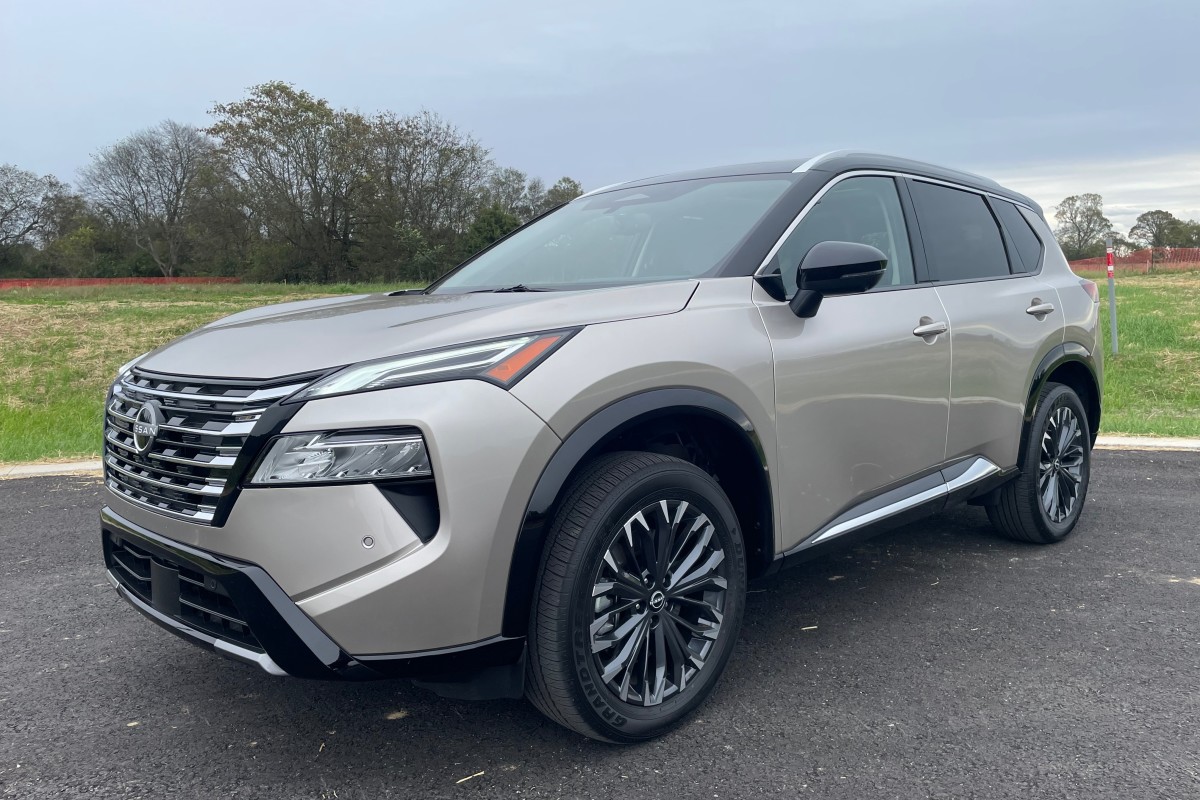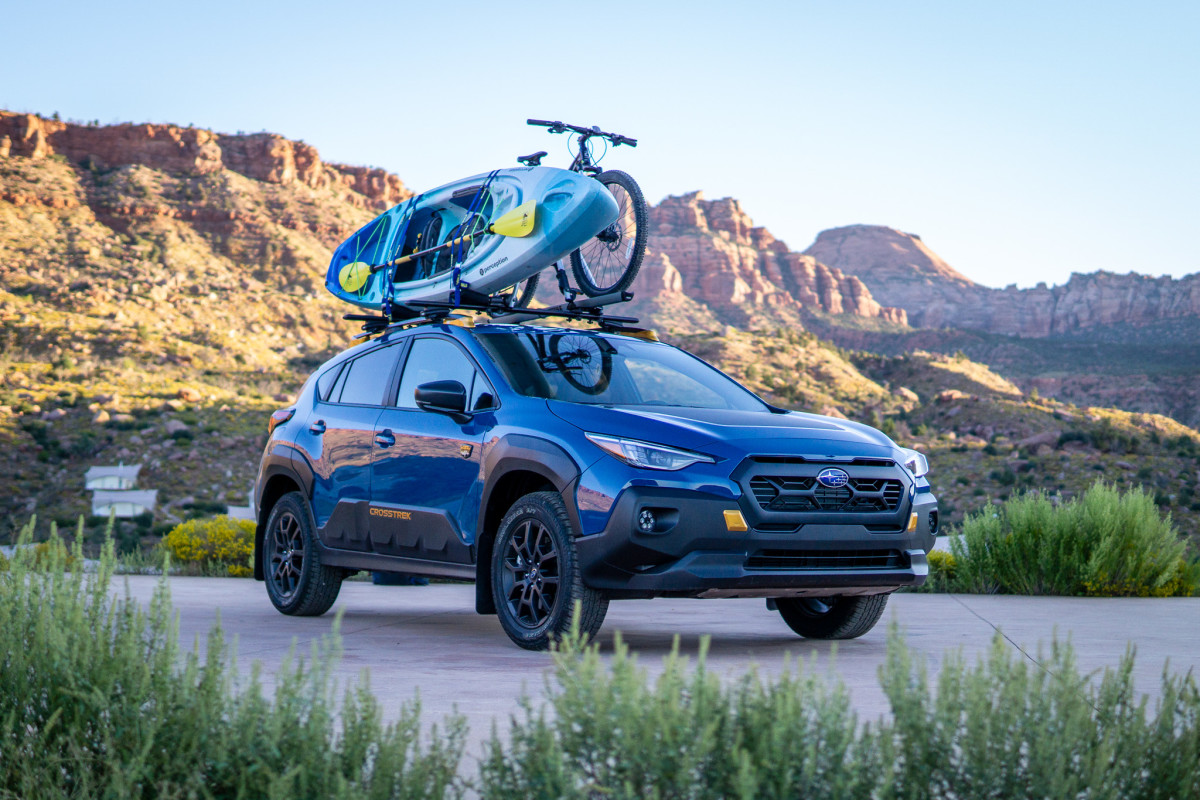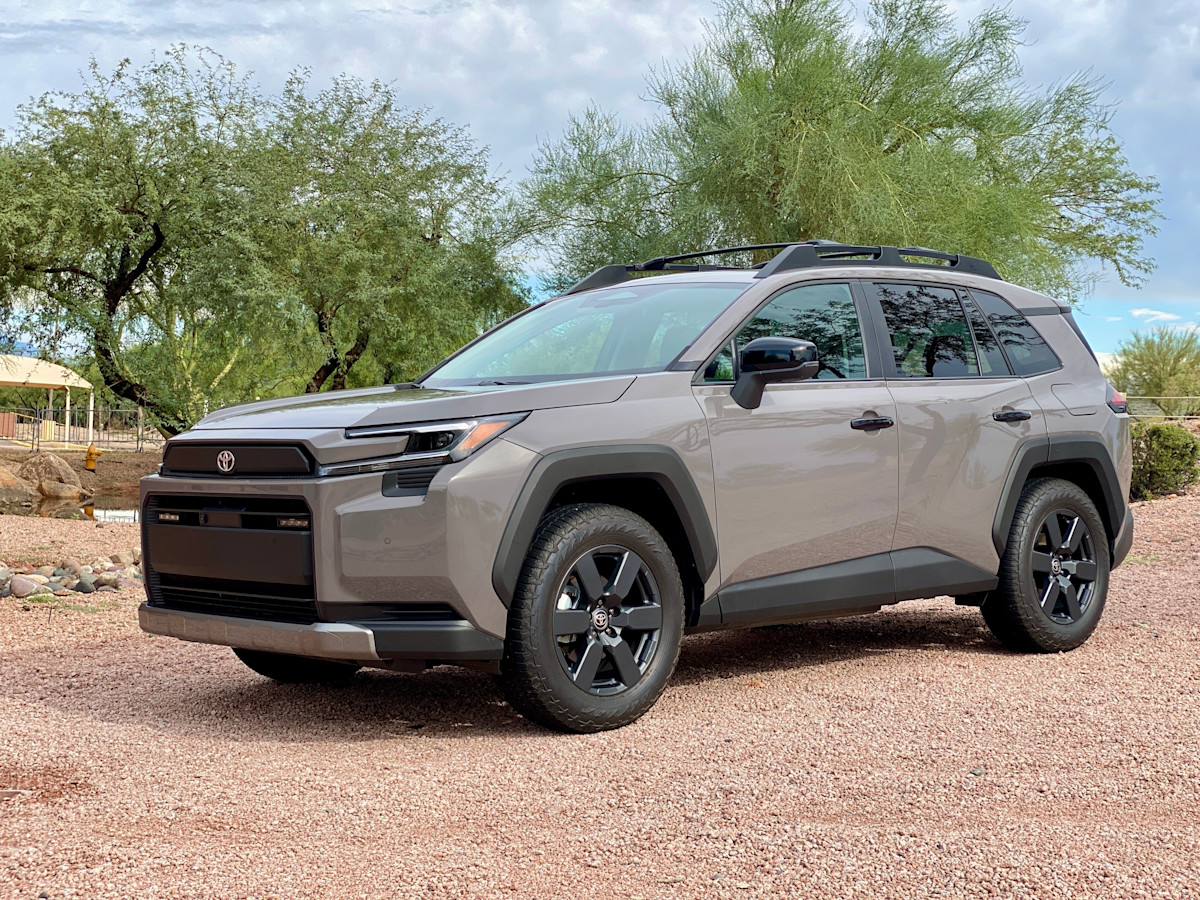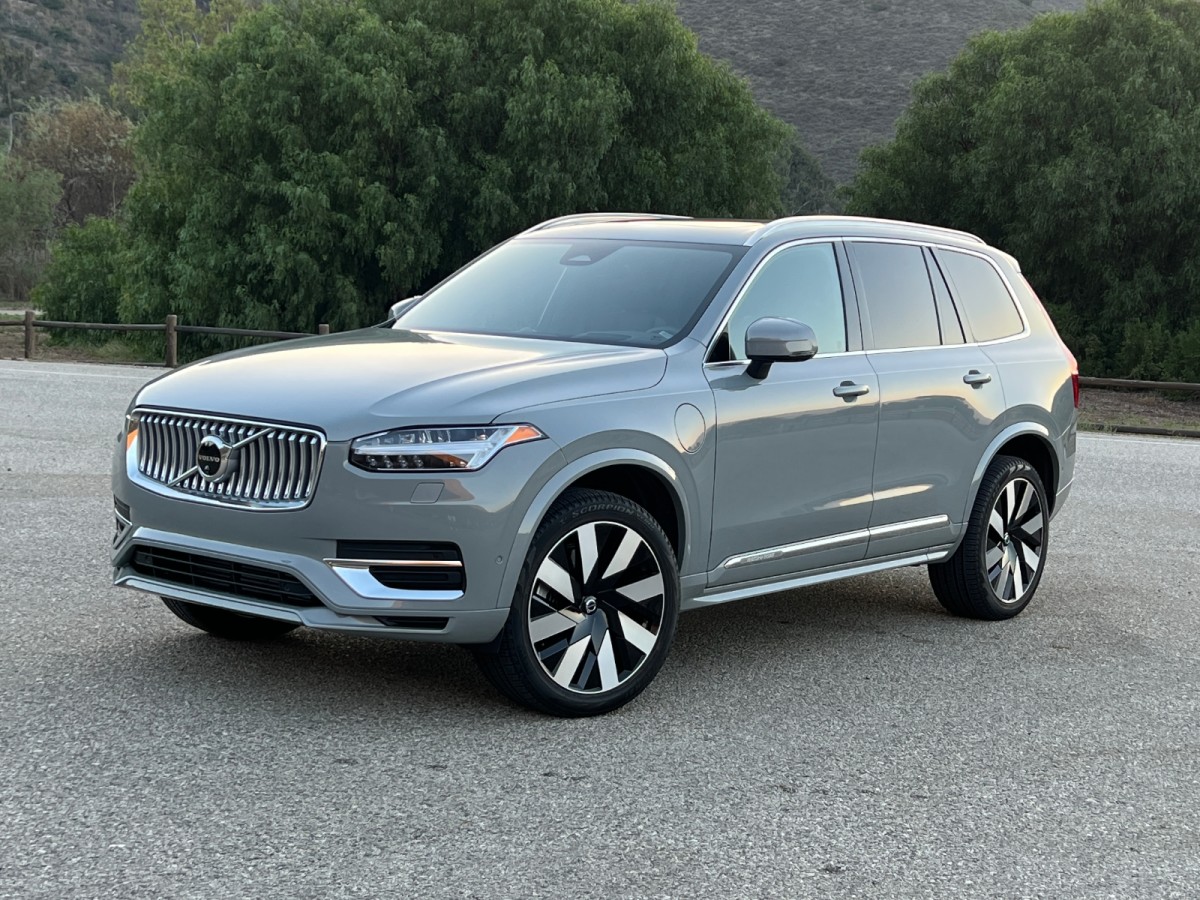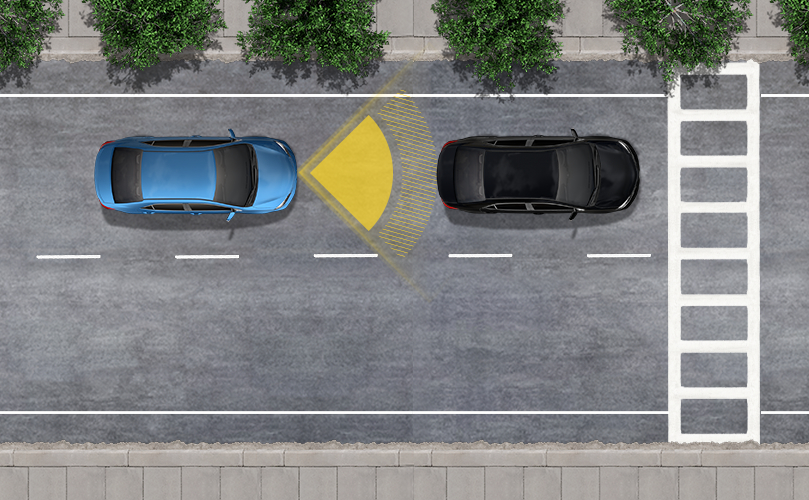The compact SUV segment is one of the most popular on the new car market. There are a lot to choose from in these ranks, and that choice only gets harder as more automakers release new models and generations.
Practicality, versatility, and fuel economy have always been appealing qualities in the small SUV end of the market, and lots of entries offer some combination of the three. The challenge lies in figuring out which one is best for you. After all, there are currently more than 40 vehicles that fit this description, a somewhat overwhelming pool, and it doesn’t help that a lot of them look an awful lot alike. We’ll save luxury SUVs from brands such as BMW, Mercedes, Audi, and Porsche for a different guide, and instead focus here on more affordable options.
Here are 10 of our top picks when it comes to the best compact SUVs worth taking for a test drive.
What Makes CarGurus Best Cars Guides Different
The Best Small SUVs of 2025
- Hyundai Tucson
- Chevrolet Equinox
- Volkswagen Tiguan
- Nissan Rogue
- Honda CR-V
- Toyota Corolla Cross
- Mazda CX-50 Hybrid
- Ford Bronco Sport
- Subaru Crosstrek
- Toyota RAV4
FAQs Shopping Tools Related Topics
1. Hyundai Tucson
CarGurus expert rating: 8.5 out of 10 CarGurus user rating: 4.3 out of 5 Percentage of Good and Great Deals available on CarGurus: 33.8% Overall CarGurus rating: 4.7 out of 5
| Pros | Cons |
|---|---|
| Energetic turbocharged powertrain | Infotainment system can be frustrating |
| Good passenger and cargo space | Learning curve on shifter controls in Limited models |
| Refined cabin styling | Disappointing powertrain |
The Hyundai Tucson stands out as a well-rounded compact SUV, blending sharp, contemporary styling with a comfortable and spacious interior. Its 2.5-liter four-cylinder engine produces 187 hp and 178 lb-ft of torque, providing adequate power for daily driving, though drivers seeking more punch may want to consider the hybrid or plug-in hybrid (PHEV) versions. Inside, the Tucson impresses with thoughtful tech integration and abundant standard features, including wireless Apple CarPlay and Android Auto on the base trim. The rear seats fold flat to reveal up to 74.8 cubic feet of cargo space—among the best in the compact SUV segment and nearly rivaling the class-leading Honda CR-V.
In terms of real-world usability, the Tucson excels with adult-friendly seating in both rows, numerous storage solutions, and a smart hands-free liftgate that makes loading groceries or gear a breeze. Safety is a strong point, with a suite of advanced features standard across the range and impressive crash-test ratings. While it may not be the most athletic or fuel-efficient option in its class, the Tucson’s balanced handling, approachable technology, and competitive pricing make it a strong value for families and commuters alike. Add in Hyundai’s industry-leading 10-year/100,000-mile powertrain warranty for extra peace of mind.
The CarGurus Verdict: "The Tucson is a well-rounded small SUV and a good value. It does not shine in any particular area, instead blending good performance with a comfortable and spacious cabin, impressive tech and safety features, and an attractive price tag." - George Kennedy
Read our most recent Hyundai Tucson review
2. Chevrolet Equinox
CarGurus expert rating: 7.7 out of 10 CarGurus user rating: 4.4 out of 5 Percentage of Good and Great Deals available on CarGurus: 30.3% Overall CarGurus rating: 4.1 out of 5
| Pros | Cons |
|---|---|
| Sub-$30k base price | Small cargo compartment for the class |
| Standard wireless Apple CarPlay and Android Auto | Minimal off-road capability even in ACTIV trim |
| Two-tone paint available (and free on some trims) | Finicky voice assistant |
The 2025 Chevrolet Equinox enters its fourth generation with a bold redesign that takes inspiration from Chevy’s larger SUVs and trucks. The new look is modern and upright, with details like the redesigned grille and “shark fin” C-pillar helping the Equinox feel more substantial and upscale. Inside, Chevrolet has focused on both form and function, with a cabin that feels airy thanks to its flat roof, sculpted dash textures, and clever storage solutions. Standard tech includes a large 11.3-inch touchscreen with Google Built-In, along with wireless Apple CarPlay and Android Auto—features that are rare at its sub-$30,000 starting price.
Performance remains familiar, with a 1.5-liter turbocharged four-cylinder engine delivering 175 hp and up to 203 lb-ft of torque. The all-wheel-drive (AWD) models get an improved eight-speed automatic transmission, while front-wheel-drive (FWD) variants use a continuously variable transmission (CVT). Acceleration is adequate for city driving, but merging onto the highway can feel leisurely. Practical buyers will appreciate the comfortable ride and available all-terrain ACTIV trim, but should note that cargo space is on the smaller side for the class, at 29.8 cubic feet behind the rear seats (63.5 cubic feet with them folded). Safety is a strong suit, with Chevy Safety Assist and Teen Driver Technology standard, making this SUV a smart pick for families and first-time buyers alike.
The CarGurus Verdict: "We wouldn't be at all surprised to see the Equinox remain one of Chevrolet's best sellers. The added value outstrips the price increase in our book, and the makeover is sure to appeal to plenty of compact SUV shoppers." - Natalie Harrington
Read our most recent Chevrolet Equinox review
3. Volkswagen Tiguan
CarGurus expert rating: 6.8 out of 10 CarGurus user rating: 4.3 out of 5 Percentage of Good and Great Deals available on CarGurus: 33.8% Overall CarGurus rating: 4.7 out of 5
| Pros | Cons |
|---|---|
| Top trim provides affordable luxury | Not much cargo space |
| Powerful engine | No hybrid option |
| Quiet cabin | Some drivers may find suspension too stiff |
Redesigned for 2025 and further refined for 2026, the Volkswagen Tiguan brings modern style, comfort, and performance to the compact crossover segment—especially in its new SEL R-Line Turbo trim. This range-topping model comes standard with 4Motion AWD and a 2.0-liter turbocharged four-cylinder engine, now delivering a robust 268 hp and 258 lb-ft of torque. The result is a more exciting drive with noticeably improved acceleration that still retains the smooth, quiet ride that Volkswagen is known for. While base models are competent, it's this SEL R-Line Turbo that truly stands out, offering a top-shelf interior with quilted Varenna leather, walnut trim, and a massive 15-inch touchscreen display.
Practicality is well-addressed, though cargo space takes a slight hit compared to the previous generation. With the rear seats up, you'll find 33.8 cubic feet of storage—still competitive, though not class-leading. Volkswagen's focus on driver comfort and tech is evident: The Tiguan offers increased rear legroom, excellent visibility, and user-friendly controls. Advanced safety tech comes standard, including automatic emergency braking, blind-spot monitoring, and Travel Assist semi-autonomous driving. While the starting price is higher than some rivals and no hybrid option is available, the SEL R-Line Turbo trim delivers strong value for drivers seeking luxury and power in a compact SUV.
The CarGurus Verdict: "With regards to performance, tech, and interior luxury, the 2026 Volkswagen Tiguan’s SEL R-Line Turbo trim level is outstanding. Lower-tier trim levels lose the luster, though, and that puts the 2026 Tiguan in a curious position. Shoppers ready to spend $45,000 on a compact crossover will love the Tiguan; those shopping at the less expensive trim levels may prefer the competition, particularly if fuel economy is a priority." - Matt Smith
Read our most recent Volkswagen Tiguan review
4. Nissan Rogue
CarGurus expert rating: 7.7 out of 10 CarGurus user rating: 4.8 out of 5 Percentage of Good and Great Deals available on CarGurus: 31.1% Overall CarGurus rating: 4.5 out of 5
| Pros | Cons |
|---|---|
| Comfortable ride | Modest acceleration and passing power |
| Good fuel economy | Upper trims less of a value |
| Upscale interior | Some rivals are sportier, more fun to drive |
The 2025 Nissan Rogue is a practical, family-friendly compact SUV that delivers real value for everyday drivers. With a refreshed design and newly available Rock Creek trim, it caters to a wide range of needs—from daily commuting to weekend adventures. The Rogue offers a smooth, comfortable ride, and the interior feels impressively upscale, especially in upper trims with features like quilted leather seats, a panoramic sunroof, and a spacious, tech-forward cabin. Rear legroom comes in at a competitive 38.5 inches, and the 31.6 cubic feet of cargo space behind the second row make it easy to handle groceries, strollers, or camping gear.
Under the hood, every 2025 Rogue uses a 201-hp turbocharged 1.5-liter three-cylinder engine, which provides decent everyday performance, though it may feel modest when merging or passing at highway speeds. The CVT is tuned for smoothness and fuel efficiency, helping FWD models achieve up to 33 mpg combined. Nissan’s ProPilot Assist 2.1 hands-free driving tech, available on higher trims, adds extra peace of mind on long highway drives. With standard advanced safety features, a comfortable and versatile cabin, and a reputation for value, the Rogue makes a strong case for itself in the crowded compact SUV segment.
The CarGurus Verdict: "With its reasonable price tag and impressive array of comfort features and tech touches, the Rogue is aimed right at the heart of the compact SUV segment. This year’s improvements add a little more polish to the Rogue, particularly with the outdoorsy Rock Creek model and latest generation of Nissan’s hands-free highway driving technology. This is an extremely well-rounded choice, though not everything is perfect." - Nick Kurczewski
Read our most recent Nissan Rogue review
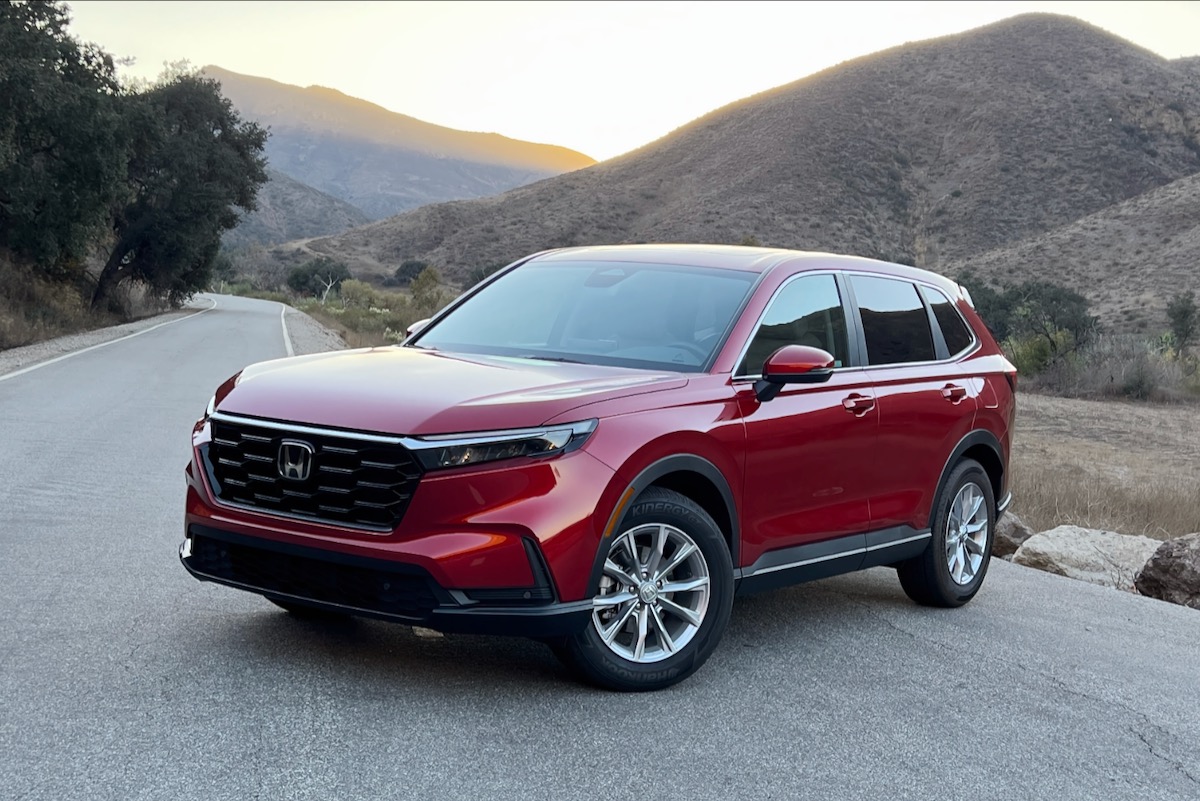
5. Honda CR-V
CarGurus expert rating: 7.8 out of 10 CarGurus user rating: 4.4 out of 5 Percentage of Good and Great Deals available on CarGurus: 30.61% Overall CarGurus rating: 4.3 out of 5
| Pros | Cons |
|---|---|
| Comfortable | Irritating transmission |
| Plenty of cargo space | Uninspired styling |
| Great ride and handling | Lacks technological innovation |
The 2023 Honda CR-V arrived with a complete redesign, refining everything that made this compact SUV a favorite for over 25 years. With a roomier interior and a blend of quality materials, the new CR-V is more comfortable and practical than ever. The EX and EX-L trims feature a well-finished cabin, with the EX-L adding leather surfaces and a more advanced 9-inch touchscreen. In terms of versatility, the CR-V’s 39.3 cubic feet of cargo space behind the rear seats (and up to 76.5 cubic feet with them folded) keeps it ahead of many rivals, making it a great pick for families and busy lifestyles.
On the road, the sixth-generation CR-V’s 1.5-liter turbocharged four-cylinder delivers 190 hp and 179 lb-ft of torque—enough for confident highway merging and daily errands. Ride and handling are standouts, with the suspension soaking up bumps and the steering providing a reassuring sense of control. Honda’s comprehensive suite of safety technology, including adaptive cruise control, lane-keeping assist, and blind-spot monitoring, comes standard. While the CVT can be noisy under hard acceleration, the CR-V’s overall refinement, comfort, and utility make it a strong contender in its segment.
The CarGurus Verdict: "Overall, thanks to its quality, comfort, utility, and enjoyable ride and handling, the new CR-V comes across as an excellent choice in a compact SUV and will certainly hold its own against top-selling alternatives such as the Nissan Rogue and Toyota RAV4." - Christian Wardlaw
Read our most recent Honda CR-V review
6. Toyota Corolla Cross
CarGurus expert rating: 6.7 out of 10 CarGurus user rating: 4.5 out of 5 Percentage of Good and Great Deals available on CarGurus: 35.6% Overall CarGurus rating: 4.3 out of 5
| Pros | Cons |
|---|---|
| Easy-to-use technology | Fairly pedestrian performance |
| Standard advanced safety features | Uncomfortable seats |
The Toyota Corolla Cross joined the ever-popular compact SUV segment in 2022, blending the familiarity of the Corolla name with SUV practicality. Built on the same TNGA-C platform as the Corolla sedan and hatchback, the Corolla Cross delivers a higher ride height, available AWD, and more cargo space—offering up to 26.5 cubic feet with the rear seats in place. Its styling is conservative and approachable, making it a solid pick for shoppers looking to move up from a car-based hatchback without diving into a full-size SUV.
Under the hood, every Corolla Cross is powered by a 2.0-liter four-cylinder engine producing 169 hp and 150 lb-ft of torque, paired with a CVT. While acceleration is responsive off the line, the engine can feel strained at highway speeds and is accompanied by typical CVT droning. Inside, tech is straightforward, with standard Apple CarPlay, Android Auto, and a user-friendly touchscreen interface. Toyota’s Safety Sense 2.0 suite provides a strong set of standard safety features, including forward collision warning and adaptive cruise control, while upper trims add even more driver-assistance tech.
The CarGurus Verdict: "The Corolla Cross doesn’t excel in any specific area, but it provides decent utility and is competitively priced. A more spacious interior and available AWD will also likely appeal to new-car buyers looking to trade up from a Corolla hatchback but wanting to stay with Toyota." - Stephen Edelstein
Read our most recent Toyota Corolla Cross review
7. Mazda CX-50 Hybrid
CarGurus expert rating: 6.5 out of 10 CarGurus user rating: 4.5 out of 5 Percentage of Good and Great Deals available on CarGurus: 30.6% Overall CarGurus rating: 4.2 out of 5
| Pros | Cons |
|---|---|
| Stylish design | Not much cargo space |
| Fun to drive | Limited rear-seat space |
| Fuel-efficient | Outdated technology |
The 2025 Mazda CX-50 Hybrid brings a new level of efficiency to Mazda's already engaging compact SUV. Powered by a 2.5-liter four-cylinder engine paired with three electric motors, it delivers a total of 219 hp and 163 lb-ft of torque, all sent to all four wheels via AWD. This hybrid system, borrowed from the Toyota RAV4 Hybrid, is a smart move for Mazda, blending proven reliability with Mazda's signature sporty handling. The CX-50 Hybrid stands out for its dynamic driving experience and attractive design, with a near-luxury interior featuring upscale materials and exclusive red leather upholstery in the hybrid model.
While the CX-50 Hybrid excels in style and driving enjoyment, it does give up some practicality compared to top rivals. Rear-seat space and cargo capacity trail competitors like the Honda CR-V Hybrid and Kia Sportage Hybrid, with just 29.2 cubic feet behind the rear seats. However, the space is still versatile for everyday needs, aided by a power liftgate and underfloor storage. With an EPA-estimated 38 mpg combined, the Hybrid offers significant fuel savings over the standard CX-50, helping offset its higher price. Safety features are generous, and the CX-50 earns high marks in crash tests, making it a compelling option for shoppers who prioritize driving enjoyment and efficiency over maximum room.
The CarGurus Verdict: "The 2025 Mazda CX-50 Hybrid brings a potent yet efficient powertrain to an already sporty SUV. Combined with attractive styling and a near-luxury interior, it would be hard to beat if it weren't for its limited passenger and cargo space." - Mark Takahashi
Read our most recent Mazda CX-50 Hybrid review
8. Ford Bronco Sport
CarGurus expert rating: 7.8 out of 10 CarGurus user rating: 4.4 out of 5 Percentage of Good and Great Deals available on CarGurus: 32.7% Overall CarGurus rating: 4.2 out of 5
| Pros | Cons |
|---|---|
| Great handling | Excessive touchscreen controls |
| Standard all-wheel drive | Mediocre fuel economy |
| Stylish design |
The 2025 Ford Bronco Sport delivers a true blend of adventurous spirit and real-world practicality. Building on its rugged Bronco heritage, the Bronco Sport brings off-road looks and capability to a compact crossover formand adds new off-road packages like the Black Diamond and Sasquatch for 2025. Most trims come with a 1.5-liter turbocharged three-cylinder engine (180 hp, 200 lb-ft), while the Badlands offers a 2.0-liter turbocharged four-cylinder (250 hp, 280 lb-ft). Every model includes AWD and up-to-date tech, such as the new 13.2-inch touchscreen with the latest Sync 4 infotainment system, wireless Apple CarPlay/Android Auto, and a 12.3-inch digital cluster.
Inside, the Bronco Sport is roomy for its size, boasting more headroom than most off-road rivals and smart storage touches, like a dedicated device tray and multiple USB ports. Cargo capacity stands at 32.5 cubic feet behind the rear seats (or up to 65.2 cubic feet with seats folded, depending on trim). The Bronco Sport can tow up to 2,200 pounds (1.5T) or 2,700 pounds (2.0T), and it comes packed with standard safety tech including Ford Co-Pilot360. While fuel economy is average for the class and some controls are touchscreen-only, the Bronco Sport’s blend of comfort, fun, and capability makes it a standout for drivers who want versatility on and off the pavement.
The CarGurus Verdict: "The Bronco Sport was designed primarily with off-road enthusiasts in mind, but it’s still a good all-around crossover." - Stephen Edelstein
Read our most recent Ford Bronco Sport review
9. Subaru Crosstrek
CarGurus expert rating: 8 out of 10 CarGurus user rating: 4.6 out of 5 Percentage of Good and Great Deals available on CarGurus: 34% Overall CarGurus rating: 4.2 out of 5
| Pros | Cons |
|---|---|
| Standard all-wheel drive | Underwhelming base engine |
| Impressive technology | Interior materials feel cheap |
| Outstanding off-road capability in Wilderness trim |
The Subaru Crosstrek Wilderness, introduced for 2024, takes everything drivers appreciate about the standard Crosstrek—like standard AWD, rugged looks, and practical dimensions—and turns up the adventure with extra off-road capability. This Wilderness trim features increased ground clearance (9.3 inches), beefier exterior cladding, all-weather interior materials, and a roof rack that can handle up to 700 pounds of static load. Inside, you’ll find the easy-to-clean StarTex upholstery and copper accents, plus extra cargo touches like all-weather floor mats and trunk-mounted Nalgene holders. While the trunk offers 19.9 cubic feet of space behind the rear seats, folding them opens up a generous 54.7 cubic feet—plenty for camping gear or outdoor adventures.
Under the hood, the Crosstrek Wilderness is powered by the 2.5-liter flat-four engine, producing 182 hp and 178 lb-ft of torque, paired with a refined CVT automatic and paddle shifters. The shorter final-drive ratio boosts capability for off-road trails and towing, with a maximum towing capacity of 3,500 pounds—more than double non-Wilderness trims. Subaru’s X-Mode traction management, hill-descent control, and standard EyeSight driver-assistance suite give you confidence in all conditions, and the new 11.6-inch touchscreen infotainment system (with wireless Apple CarPlay and Android Auto) brings big-tech convenience to this compact, go-anywhere SUV.
The CarGurus Verdict: "Add in the Crosstrek’s on- and off-road capability and the brand’s reputation for strong resale values, and the 2024 Subaru Crosstrek looks like an excellent choice for active, adventurous shoppers." - Matt Smith
Read our most recent Subaru Crosstrek Wilderness review
10. Toyota RAV4
CarGurus expert rating: 6.8 out of 10 CarGurus user rating: 4.4 out of 5 Percentage of Good and Great Deals available on CarGurus: 30.6% Overall CarGurus rating: 4.1 out of 5
| Pros | Cons |
|---|---|
| Multiple trims and styles | Confusing trim levels |
| Standard hybrid | Size hasn't kept up with rivals |
| Updated tech |
The 2026 Toyota RAV4 boasts a fresh redesign, offering more power and improved efficiency thanks to its now-standard hybrid system. With seven trim levels and three different design themes—Core, Rugged, and Sport—buyers have plenty of choices, but navigating the lineup can be a bit confusing. The RAV4 hybrid powertrain delivers up to 236 hp and 153 lb-ft of torque, providing both brisk acceleration and impressive fuel economy, with up to an estimated 44 mpg combined on FWD models. Cargo space remains practical, at 37.8 cubic feet behind the rear seats and 70.4 cubic feet with the rear seats folded, making it easy to haul groceries, gear, or luggage for a weekend away.
Inside, the RAV4 benefits from updated technology, including a standard 12.3-inch digital instrument cluster and a larger, more responsive touchscreen system with wireless Apple CarPlay and Android Auto. Safety gets a boost with the latest Toyota Safety Sense 4.0, offering more advanced driver-assistance features, including adaptive cruise control and a free-hands driving mode for limited-access highways. While the RAV4’s size hasn’t grown to match some of its competitors, Toyota has made clever use of interior space with ample storage solutions and comfortable seating for four adults. Pricing remains competitive, especially considering the hybrid’s lower fuel costs compared to gas-only models.
The CarGurus Verdict: "The good gets better, but the RAV4's lineup is confusing enough to need a Venn diagram." -Robert Duffer
Read our most recent Toyota RAV4 review
Best Small SUVs of 2025: FAQs
What is the most affordable small SUV? The Hyundai Venue is one of the most budget-friendly options, with a starting MSRP just over $20,000 for the base SE trim. It offers the core SUV form factor at a price point that's hard to beat.
Which small SUV is best for fuel economy? The Mitsubishi Outlander PHEV and Kia Niro are excellent choices for fuel-conscious drivers. The Outlander PHEV offers 38 miles of electric-only range, while the Kia Niro is available as a hybrid, plug-in hybrid, or a full EV with a 253-mile range. The Toyota Corolla Cross Hybrid also boasts an impressive EPA-estimated 42 mpg combined.
Which small SUVs offer a third row? The Mitsubishi Outlander PHEV is one of the few compact SUVs to offer third-row seating, giving it an edge in versatility and passenger capacity over most competitors in its class.
Which small SUV is best for off-roading? For light off-road enthusiasts, the Jeep Compass Trailhawk and Subaru Crosstrek Wilderness are top contenders. Both come with enhanced 4WD or AWD systems, increased ground clearance, and other features designed to tackle more challenging terrain than the average small SUV.
What's the best small SUV for families? The all-new Chevrolet Equinox is a great choice for parents with teens, thanks to its standard Teen Driver monitoring system. The Hyundai Tucson is also a strong pick with its roomy passenger compartment and generous cargo space.
What Makes CarGurus Best Cars Guides Different?
Most car-shopping websites publish lists of the best cars across a variety of categories, with recommendations generally driven by editorial expertise. Here's what makes ours different: In addition to the insights and verdicts of our team of car-testing experts, our best cars guides take into account other factors that we know matter to buyers-real owner experiences and current market value.
Our expert reviewers are among this country's most trusted automotive journalists, also writing for publications including US News and World Report, Edmunds, Digital Trends, J.D. Power, and Car & Driver. They put each car through real-world testing and create detailed reviews of performance in a range of categories, from practicality and driving manners to cost-effectiveness and safety.
We also analyze hundreds of thousands of used car listings on CarGurus.com to track which models consistently offer the highest percentage of best deals relative to how many are listed for sale. Then we factor in reviews from owners-people who actually live with these cars every day. Our proprietary Best Cars algorithm then creates a final Overall CarGurus rating combining expert scores, user reviews, and the percentage of listings that have earned the Good or Great Deal rating. This multi-pronged approach reveals not just which cars excel on paper, but which ones deliver satisfaction and value when you're ready to buy.
The CarGurus market data used in this guide was last updated in November 2025. Values were accurate at time of publication and should be used as a guide only.




